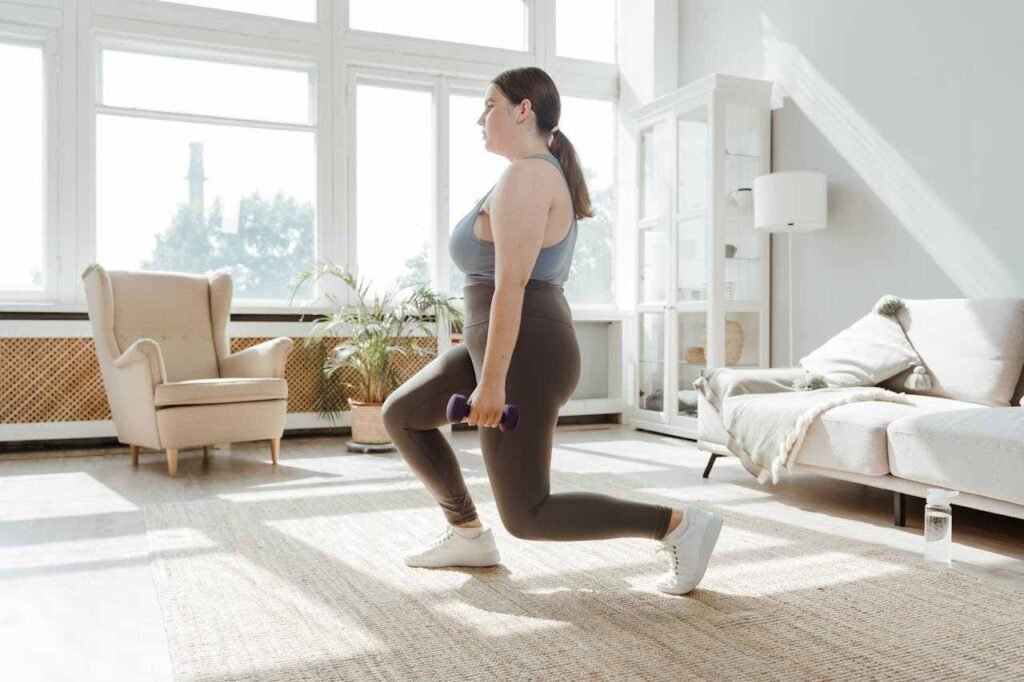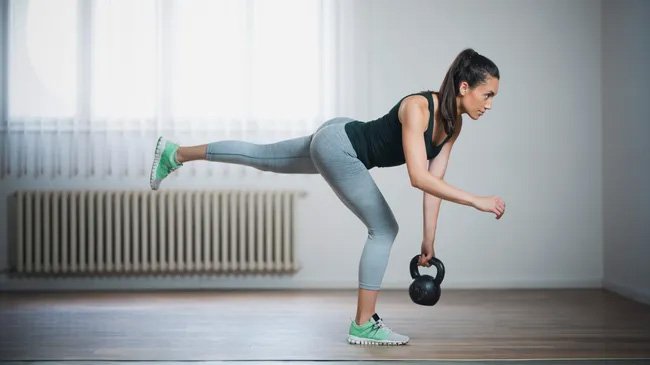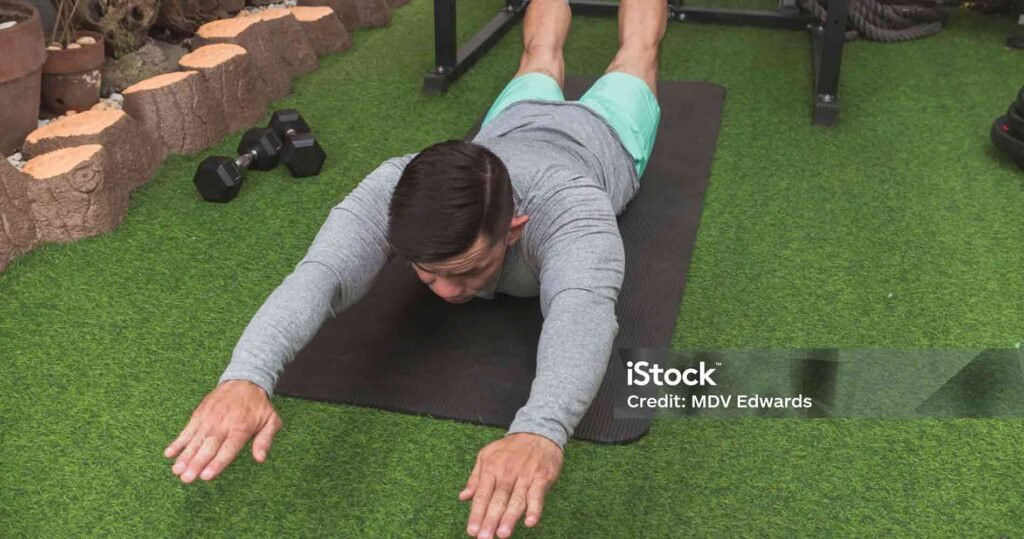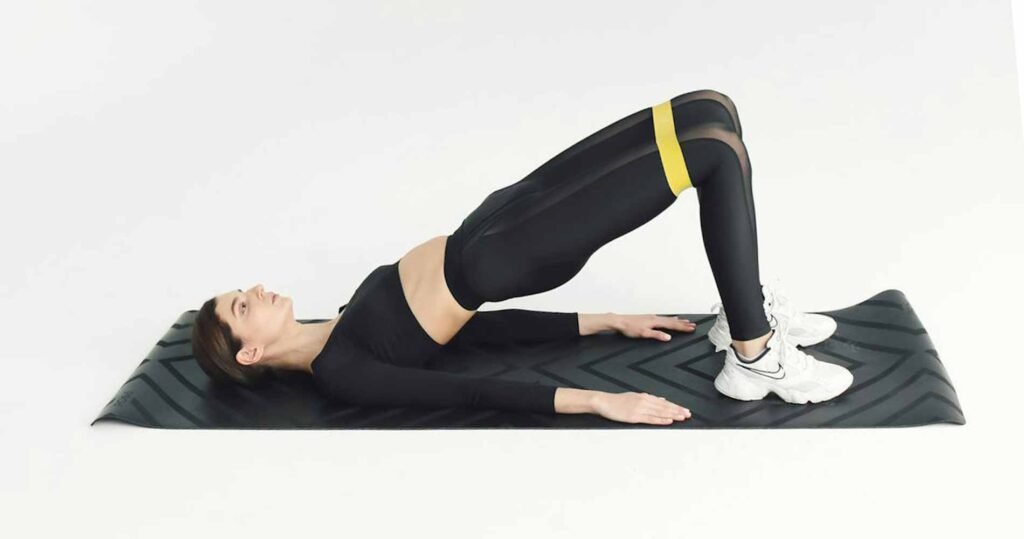Do you want to turn your light runs into fast, top ones? Going from a simple jogger to a quick racer is not just about running more or faster—it’s about smart training. Top runners don’t just count on long runs; they use key plans to raise speed, power, and endurance.
This guide will show you key moves that can lift your speed, make you challenging, and help you hit your run goals. If you are chasing a new top score or getting set for your first big race, these plans are your way to great running.
The path to being a top runner starts now. Let’s do it!
Want to know more about top workouts for Runners?
1. Walking Lunges

Reps & Sets: 8 reps on per side; 2 sets
Benefits: It helps with single-leg balance and makes you stable and better at running. It also makes your steps longer, so you can run quicker.
Steps:
- Start: Stand up straight on your feet with your feet apart.
- Step Forward: Move one Leg ahead far, drop down so the knee of the back Leg goes toward the ground but doesn’t touch.
- Keep Aligned: Ensure your front knee is right over your foot and keep your body straight.
- Push Up: Push on your front foot to move your back Leg to the front, and stand up with your feet together.
- Change Legs: Do it again, using the other Leg now. Keep changing legs.
Changes for More Work:
- Dumbbells: Take a dumbbell in each hand by your sides to make it harder. Then, take a weight that lets your hands keep a good form.
- Medicine Ball Core Engagement: Hold a medicine ball with both hands. As you step forward, lift the ball over your head, keeping your arms not bent. Drop it as you stand up again.
Keep your moves slow and steady to get the most out of it for balance, working together, and walking better.
Editor's Note for More Complexity
- Increase Repetitions: Each week, add two to five more lunges for each Leg.
- Add Weights: Hold small weights, like two dumbbells or a weighted jacket. Start with a light five to ten pounds each hand and increase as you become stronger.
- Make it Harder:
- Add Jump Lunges to make it more active.
- Do Reverse Lunges for variation.
- Put the back foot up on a step for Bulgarian Split Squats. This needs more balance and strength.
2. Single-Leg Deadlift

Image credit: Getty/SrdjanPav
Reps & Sets: 10 times on each side; 2 sets
Benefits: Makes the back of your hips and legs improve your run speed and keep you steady while also reducing the risk of injury.
Steps:
- Start: Stand up straight with a weight in your right hand, down by your side.
- Tighten Belly and Raise Leg: Take your left foot off the floor and push your left Leg back as you lean forward at your hips.
- Drop the Weight: Keep your back straight and hips even. Lower the weight to the ground. The Leg you are standing on (right) should bend a bit at the knee to keep you steady.
- Horizontal Alignment: Try to keep your back and the Leg you have out flat like the floor, or as near as you can, but keep your form right and under control.
- Go Back to Start: Move back the way you came by using your butt and back leg muscles to pull your body straight up.
- Repeat: Finish all the moves on one side before you change to the next side.
Take it slow and steady, keeping your back straight all through. This helps your balance muscles work the best.
Editor's Note for More Complexity
- Increase Repetitions: To grow stamina, add 2-3 reps to each set Each week.
- Add Weights: Begin with a small weight (10-15 lbs) and gradually increase. You can also try a kettlebell for a new kind of grip test.
- Make it Harder:
- Do the move slower to work more support muscles.
- Try a One-Leg Deadlift to Knee Drive, pulling the non-working knee up for extra core engagement.
- Put a resistance band around your waist for more pull.
3. Superman/Back Extension

Reps & Sets: 10 reps; 2 sets
Benefits: It strengthens the middle and upper back, which helps maintain a good, straight running stance and improves running.
Steps:
- Starting Place: Lay face down on the ground with legs straight, hands near your ears, and palms facing down. You have to Keep your shoulders and neck straight by looking down.
- Lift Chest and Shoulders: Use your back muscles to raise your chest and shoulders up from the ground. At the same time, pull your shoulder blades close.
- Hold Spot: Stay up for a short time. Keep using your back muscles tightly.
- Lower Back Down: Slowly let your chest and shoulders return to where you started.
- Repeat: Do the move as many times as told.
Make sure to keep the moves smooth, and don’t jerk to keep your back muscles safe, and so you don’t hurt your neck or lower back.
Editor's Note for More Complexity
- Increase Repetitions: Slowly add 5-10 more seconds per hold or increase your set count.
- Add Weights: Add a small weight (2-5 lbs) in hand while stretching out.
- Make it Harder:
- Do a W-Squeeze. Pull your arms back to work the upper back.
- Try Superman Pulses by raising and dropping your body in tiny moves to make it more challenging.
- Use a stability ball to work more of your core.
4. Glute Bridge

Reps & Sets: 15 reps; 2 sets
Benefits: Makes the glutes strong, helps them work better when you run. This makes you more stable by keeping your hips even and lining up your legs, hips, and upper body, which improves your running.
Steps:
- Start: Start by lying on your back. Your knees should be bent and your feet flat on the ground, and your arms set as wide as your hips. Let your arms rest by your sides. Simple, right?
- Lift Your Hips: Push down on your heels to raise your hips high, and make a straight line from your knees to your shoulders.
- Hold the Position: Your shoulders should stay on the ground to protect your neck. Stay in the bridge spot for two seconds, and squeeze your glutes hard at the top.
- Lower Back Down: Slowly bring your hips back down to the ground with care.
- Repeat: Keep going for the set number of times.
Changes for More Work:
- Arm Position: Reach your arms out above your head to work your middle part more.
- Single-Leg Change: Make the move with one Leg up off the ground and switch legs after each set.
Make sure to use your butt muscles more than your lower back when you lift your hips.
Editor's Note for More Complexity
- Increase Repetitions: Do 5-10 extra reps each time.
- Add Weights: Put a light barbell or dumbbell (10-20 lbs) on your hips. Add more as you can.
- Make it Harder:
- Do Glute Bridges on a single Leg to work each side individually.
- Put your feet up on a bench for Hip Thrusts to move them more.
- Use resistance bands above your knees to engage your glutes harder.
5. Leg Raises

Reps & Sets: 10 reps; 2 sets
Benefits: Make strong hip flexors to help lift knees high when you run. Also works on the lower belly and keeps your torso firm.
Steps:
- Starting Spot: Lay flat on your back with your arms by your sides, hands down. Keep your legs straight and your feet as one.
- Lift Your Legs: Use your belly muscles and lift your legs up as straight as more as you can, as high as is comfy.
- Bring Them Down Slow: Gently let your legs come down, stop just above the floor to keep some tightness.
- Do It Again: Keep doing it until you hit the set number of reps.
Changes:
- Single-Leg Variation: If the normal way is too hard, lift one Leg up while the other Leg stays down on the ground.
- Extra Core Work: Put your hands under your lower back if you need help, or keep them up off the ground to make it harder.
Keep your moves slow and in control, and do not let your lower back curve up. This will help keep your spine safe and make your core work harder.
Editor's Note for More Complexity
- Increase Repetitions: Slowly put 2-5 more reps into each set.
- Add Weights: Hold a small weight between your feet or put on ankle weights.
- Make It Harder:
- Do Hanging Leg Raises on a pull-up bar.
- Try V-Ups, lifting your top half and legs at the same time.
- Make the moves slower to grow the time your muscles work.
The Essence
Going from a just-for-fun runner to a top-tier racer takes more than just many runs. You need to mix special workouts into your run plan. These are essential to build muscle, stay strong for a long, and move right so you can do your best. The best moves make key muscles strong, help your run form, and reduce getting hurt, all while boosting your all-around sports skills.
Whether you want to win your first 5K or beat a big marathon, mixing strong moves, balance work, and core drills will boost your run game. Stick to these workouts, focus on doing them right, and see how your steps get strong, quick, and powerful. The shift from a fun runner to a serious one begins now—keep at it, and you’ll see the rewards.
FAQs
1. How do I make my balance better in walking lunges?
To improve your balance, hold your core tight and keep your gaze ahead, not down at your feet. Start by taking small steps, and then go for a deeper lunge. Trying out lunges by a wall for a bit of help can also work.
2. Should I keep my knees behind my toes in walking lunges?
Yes, do not let your front knee go past your toes. Make sure your step is not too long so your knee lines up with your ankle. This will keep your knee safe from hurt.
3. How can I stop wobbling in single-leg deadlifts?
Keep your spine neutral and engaging your core. Go slow, and try doing it without shoes for a better ground feel. Using a wall or a chair for a small help works well, too.
4. Can I do one-leg lifts with weights?
Sure! Once you master it without weights, use a light dumbbell or kettlebell in one hand for more resistance. Start with a small weight and gradually increase it.
5. What are the benefits that come from Superman/Back Extensions?
This move makes your lower back, butt, and back legs strong while making you stand tall. It cuts the chance of back pain by making the spine support muscles better.
6. Why does my lower back hurt when I do Superman/Back Lifts?
If you feel pain, it may be from too much bending. Keep your moves smooth, and don’t lift too high. Use your butt and abs to ease pressure on your lower back.
7. How can I make Glute Bridges work better?
To fire up your butt muscles, push down with your heels and tighten your butt at the top. Putting a stretchy band around your legs can boost your workout.
8. Is it okay if I do Glute Bridges every day?
Yes, these are easy on your body, so doing them each day is good. But you can change up the difficulty by adding weights or moving your feet to keep getting better.
9. Why do my hip flexors hurt more than my abs when I do Leg Raises?
If your hip flexors are working too hard, your back might not be flat on the ground. To help, you can try bending your knees a bit or putting your hands under your back.
10. What can make Leg Raises harder?
To make it more challenging, you could use weights on your ankles, go slower, or do them hanging from a bar.









